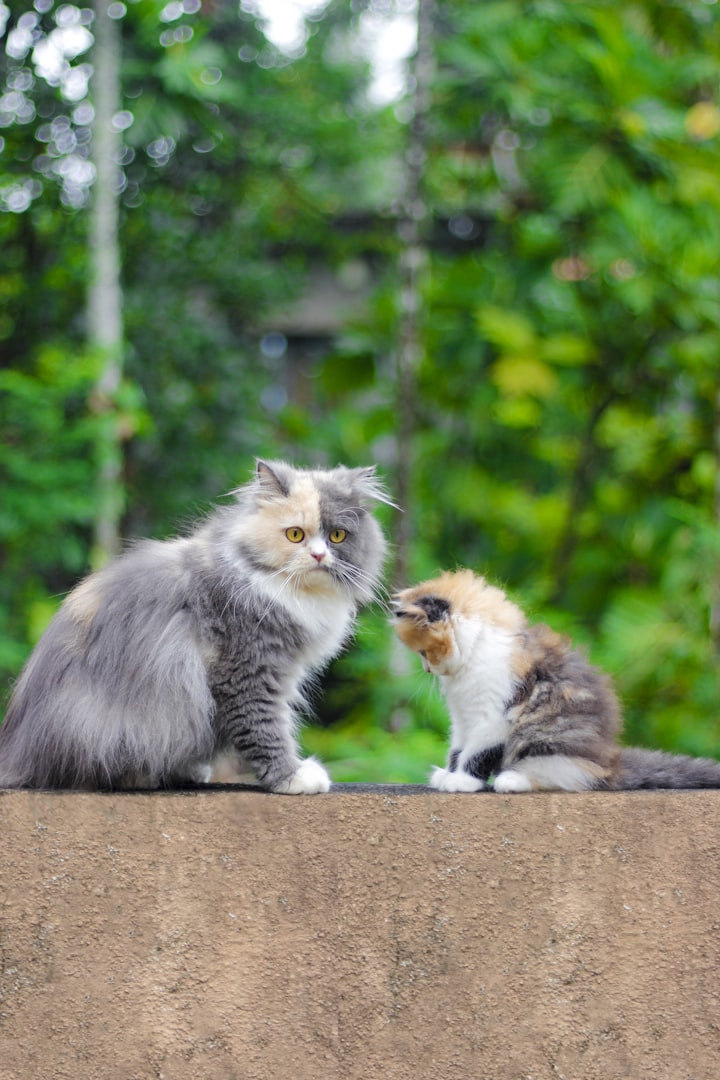Belgian Political Party Targets Zoos and Aquariums
From the outside, a political party that is based in Belgium may look like a group is against animal and wildlife cruelty, but they do have the sinister agenda of targeting zoos and aquariums.

From the outside, DierAnimal may look like any environmental-based political party that works to find methods that are aimed at improving the environment and help troubled animals. After all, any cause that is aimed at helping animals, and the planet are noble causes that we can all agree to on so many levels, However, what some supporters and zoo and aquarium professionals may now know is that DierAnimal has its very own hidden agenda that they should all need to look out for. What is that agenda you may ask? They target zoos and aquariums with the aim at “phasing” them out.
Why is this a concern?
On their website, the DierAnimal party has its own campaign of “eliminating” any Dutch zoo or aquarium that currently houses marine mammals by subjecting all of them to these expensive and potentially dangerous “return-the-wild programs” that have proven time and time again to be unsuccessful in long-term captive animals, particularly in cetaceans. In addition, they also insist that the keeping of animals in zoological facilities for the purposes of research, conservation, and education are not “valid” reasons to continue raising animals in human care. These are claims coming out of the mouths of extremists who insist that animals are “better off dead” than saved, harass people online by telling them “watch” movies like Blackfish or The Cove. Most of all, these are the very same group of people who often target kids online with anti-zoo propaganda.
How Zoos and Aquariums Prevent Extinction
About more than twenty of the estimated 1,459 species that have been listed as “endangered,” “threatened,” or “vulnerable” have been saved from extinction thanks to conservation efforts of zoos and aquariums worldwide. However, zoological facilities still continue to save more species through research and education to this day.
- In the 1970s, the black-footed ferrets of the American west were thought to be extinct. However, when a colony of eighteen animals was discovered, they were then taken in zoos in hopes to create an effective breeding program that was aimed at increasing their numbers and release their offspring into parts of their former range. Now, it is now estimated that about 4,500 ferrets have since been released back into their natural habitat.
- In 1982, there were only 22 California condors left in the world. As a result, scientists and veterinarians from the Los Angeles Zoo and the San Diego Zoo collected the remaining wild birds for the purpose of a then-newly created program that was established to breed the endangered birds and reintroduce them back into parts of their historical range. This program resulted in the California condor population increase to 425 birds, including a small population that has been flying through the Grand Canyon since 2000.
- About 200 golden tamarins remained in the wild during the decade of the 1970s. Then, scientists began to reintroduce 146 zoo-born tamarins and now, around more than 3,000 of these small primates are found throughout their native rainforest habitat in Brazil.
- During the ’70s, less than 17 red wolves were found in wild forests of the Southeastern United States. However, thanks to captive breeding and reintroduction programs, about 75 red wolves can now be found in their native habitat.
- North Africa’s scimitar oryx was first declared “extinct in the wild” in 2000 after years of poaching and habitat loss took a toll on wild populations. In 2016, however, zoos reintroduced the first 25 of 500 oryx into their historical range.
- Panama’s golden frogs, the country’s national symbol, is now believed to have died out in the wild as a result of exposure to an invasive fungus. However, thanks to zoos, the species has been saved through research and breeding programs. Now, they currently developing plans with the Panamanian government to reintroduce the frogs back into their natural habitat.
- In the 1940s, about less than 30 whooping cranes were left in the Southeastern United States. Then, zoos, in partnership with the International Crane Foundation, managed to increase their numbers to around 300 cranes.
- By 1969, Mongolia’s Przewalski's horse was declared “extinct in the wild.” However, because these beautiful horses were thriving at zoos, breeding and reintroduction to their historical range in Mongolia and China have increased their numbers to around 400 horses in 30 different herds.
Zoos and Aquariums encourage Stewardship.
Aside from breeding programs that are aimed at one-day reintroducing animals back into parts of their former range, they also offer a lifeline to species that obviously would have not survived the everyday cruelties that they face in their wild habitats, such as oil spills, and injuries relating to entanglement, vehicle strikes from boats, jet skies, and automobiles, unusual mortality events, and so on. These zoological facilities are specialized in taking in animals that are sick, orphaned, or injured, and are in need of being rehabilitated for a period of time. Once the animals have recovered, the government can determine if these animals can be released back to their natural habitats, but if they are deemed “non-releasable” for whatever the reason it may be, then they may either stay at the facility that first rehabilitated them as its “resident” animal, or, under the orders of the government officials, is moved to another facility. These rescued animals help educate people about what could possibly happen if they are not cautious the next time they go fishing, spend a day at a beach or feed wildlife during a stroll in a forest, or on a boat. They also give researchers new ideas on how to prevent these strandings from happening in the first place and find ways to work with local officials on how to work with communities to keep wildlife safe from human conflicts.
Zoos and Aquariums also provide a final safe haven for animals that have little-to-no-natural habitat at all. These animals may include some of the most iconic of zoo animals-such as monk seals, belugas, polar bears, big cats, macaws, elephants, various primate species, and giant pandas. In fact, there are a number of animals that are considered to be “extinct in the wild” but are only kept alive at zoos.
These days, though, many zoos and aquariums have one of their big stewardship campaigns focused on ending plastic pollution, which is the single-use of plastics that often end up in oceans and waterways. These plastics can be a threat to wildlife that might mistake it for prey and viral videos of animals undergoing procedures to remove plastic waste from their bodies have gone viral to the point where viewers have made pledges to only use reusable products and take part in annual beach clean-ups.
Outside of the respective facilities, zoos and aquariums also finance conservation efforts by spending hundreds of millions of dollars annually on projects that are aimed at research efforts in breeding, habitat, veterinary science, and education. In fact, the World Association of Zoos and Aquariums has recommended for all zoos and aquariums to devote three percent or more of their budgets to conservation work.
Zoos and Aquariums Promote Animal Welfare in Human Care.
In order for any zoo, or aquarium to be able to do most of the good that they actually do, they must be held to the highest standards of animal welfare. The American Humane’s Humane Conservation program furthers this zoo-based goal by certifying that all animals who reside in scientifically accredited zoos, aquariums, and marine parks are all healthy, social in a positive manner, active, safe, and are living with proper light, sound, air, water temperature, and quality, and of course, heat levels. These standard practices are set by experts who are specialized in animal care and husbandry, which helps provide third-party validations of humane treatment and welfare that can ensure that all animals that live at these facilities are living healthy, happy, and comfortable lives.
They also work to find new ways to keep animals healthy and active throughout the day as well. For example, many zoos and aquariums conduct animal welfare research to understand and evaluate how animals who live under their care see, hear, or smell the world around them, and what behaviors would motivate them to do so. Keepers and trainers alike then find new innovative ways to enrich the lives of their animals by creating new opportunities for them to use their skills and behaviors. For instance, at marine mammal facilities, trainers may create “iced” fish by mixing a combination of frozen fish with ice, various veterinarian-approved environmental enrichment devices (EED), and non-toxic food coloring dyes to create new behavioral opportunities for seals to stimulate the hunting and feeding behaviors that they often display in waters off the New England coast which, in turn, will help improve the well-being of the seals who are living under their care.
In Conclusion
By saving species, whether if it's through breeding and reintroduction programs, research, rescue and rehabilitation, education, and stewardship, zoos and aquariums preserve the incredible connection between people and animals, which has inspired generations of people from near and far. If this bond gets snapped away into dust, it will not only doom endangered wildlife but also endanger the wild places that their species call home. To generate the support that would be needed to help troubled wildlife, people need to first love animals and in order for them to do so, they must first get to know them. Believe it or not, increased urbanization around the world means that zoos and aquariums may be the only opportunity most people will ever get to have to know endangered animals and how to protect them out in the wild. More than 183 million people visit zoos and aquariums each year.
DierAnimal needs to be more focus on improving the lives of animals at zoos and aquariums through recommended guidelines that are aimed at improving animal welfare at zoological facilities rather than phasing them out.
About the Creator
Jenna Deedy
Zoo and Aquarium Professional, Educator, Cosplayer, Writer and B.A. in Psychology whose got a lot to share when it comes to animals, zoos, aquariums, conservation, and more.
Instagram: @jennacostadeedy






Comments
There are no comments for this story
Be the first to respond and start the conversation.